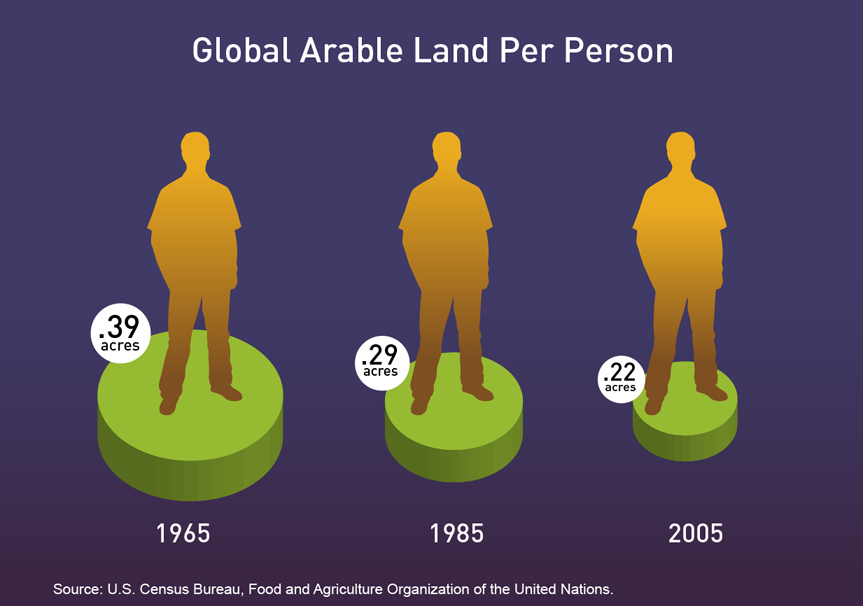Reasons for loss of arable land
- Population growth and changing consumption habits will create a considerable degree of additional demand which will turn place pressure on arable land resources
- Arable land scarcity is the result of a range of human and climatic factors including degradation, climate change, soil constraints, urban encroachment and unequal land distribution
- There currently remains some 2.7 billion hectares of land with potential for crop production in the world, concentrated in South and Central American and Sub-Saharan Africa
- The solutions to addressing the availability of arable land are three-fold: the production of more arable land, increase in the productive capacity of existing arable land and the conservation of arable land in order to prevent degradation
- Despite more than an adequate supply of arable land to meet future demand, land availability will continue to be a major factor in meeting future food security because of the need to find a balance between competing interests and uses and finite resources.
Global arable land per person
According to the Global Land Assessment of Degradation, nearly two billion hectares worldwide has been degraded since the 1950s. These two billion hectares represent 22% of the world’s cropland, pastures, forests and woodlands. In particular, Africa and Latin America have the highest proportion of degraded agricultural land. Asia has the largest proportion of degraded forest land, as revenue-poor national governments pursue lucrative policies of deforestation.
Degradation is not the only reason for declining levels of arable land. There are a variety of climatic, environmental and human factors all of which have an effect on available arable land resources.
At present some 12% (over 1.5 billion hectares) of the world’s land surface is used in crop production. This area represents over a third (36%) of the land estimated to be suitable for crop production to some degree. There remains some 2.7 billion hectares of land with potential for crop production.
Global arable land will decrease
This land, however, while plentiful, is unevenly distributed between regions and countries. An estimated 1.8 billion hectares of the potential crop land is located in developing countries, where rapid projected population growth means that demand pressures in the future will be significant. Yet 90% of that 1.8 billion is in Latin America and Sub-Saharan Africa and half of the total is concentrated in just seven countries (Brazil, Democratic Republic of Congo, Angola, Sudan, Argentina, Colombia and Bolivia). There is virtually no spare land available for expansion in South Asia, the Near East and North Africa.
Global land area in numbers
The alternative to creating more arable land is to improve the yield and productivity of land currently being cultivated. These technologies include high-yielding varieties, management of fertilizers and pesticides, mechanization, irrigation management and use of new farming techniques such as farm software AGRIVI. It helps farmers manage whole farm production, from tracking of activities on all fields, consumption of fertilizers, pesticides, work hours of workers and mechanization, to tracking of finances and complete farm analysis and reports.
Source: Future Directions








